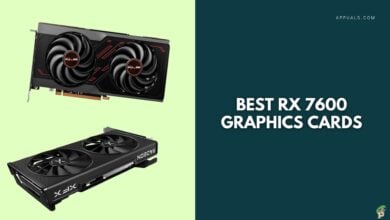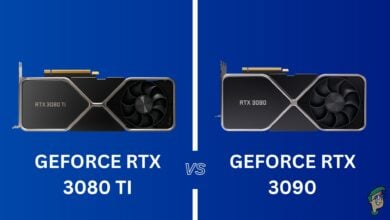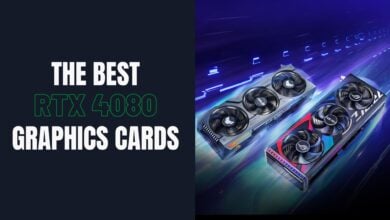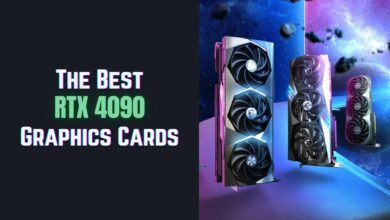Best GTX 1650 Graphic Cards For Entry-Level Gaming
Getting the best GTX 1650 graphics card isn’t easy to decide. NVIDIA GTX 1650 is one of the latest graphics cards from the green team for low-end gamers, which is released as a replacement for the GTX 1050 or GTX 1050 Ti. It comes at a similar price while offering much better performance than both of these 10-series graphics cards. The graphics card received a lot of critics from people, as it was supposed to be a competitor of GTX 1060. Still, it is a great product for those people who want a graphics card that would provide stable frame rates at 1080p resolution. This graphics card, however, cannot provide smooth frame rates in the latest AAA titles with ultra settings.
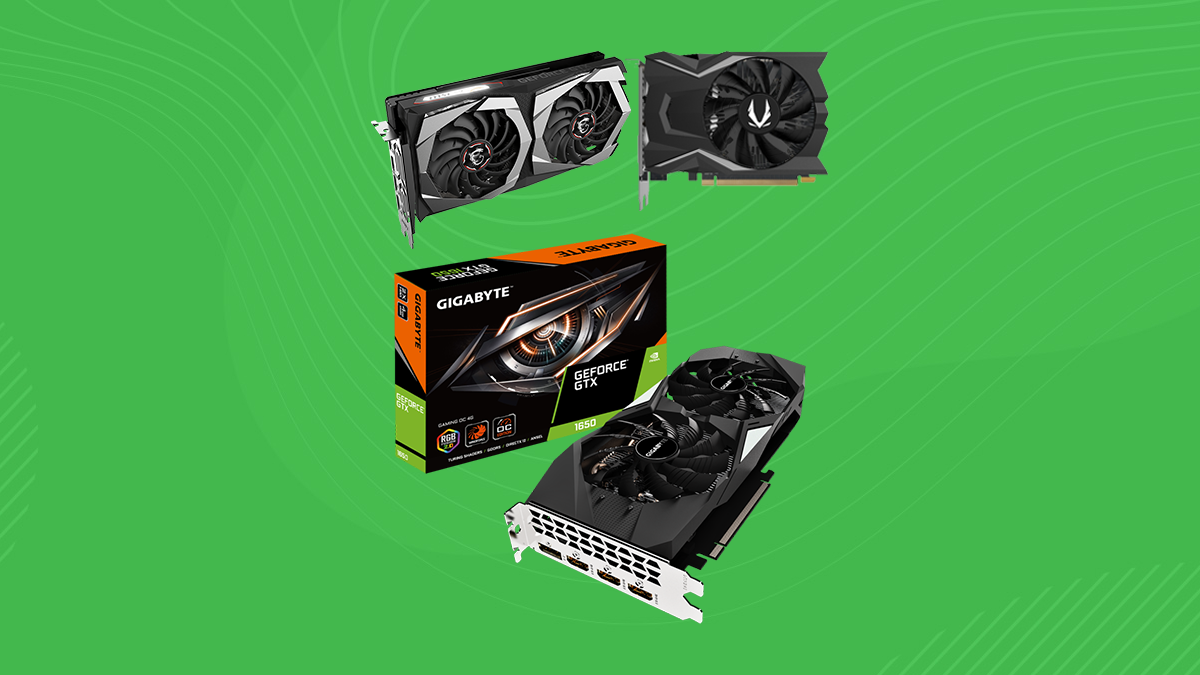
As for the architecture of the graphics card is concerned, it offers 896 shader processing units along with 56 Texture Mapping Units and 32 Render Output Units. Moreover, it is equipped with 4GB of GDDR5 memory with a 128-bit memory bus and a 2000 MHz memory clock. Speaking of clocks, the base clock of the graphics card is fixed at 1485 MHz while the boost clock reaches 1665 MHz. The real-world clock rates of the graphics card, however, will be close to the 1700 MHz mark due to Nvidia GPU Boost.
Best GTX 1650: Our 5 Best Picks
| # | Preview | Product Name | Award | Details |
|---|---|---|---|---|
| 1 |  | MSI Gaming X GeForce GTX 1650 | Best Overall GTX 1650 | Check Price |
| 2 |  | EVGA GeForce GTX 1650 XC Ultra Black Gaming | Best Cooled GTX 1650 | Check Price |
| 3 | 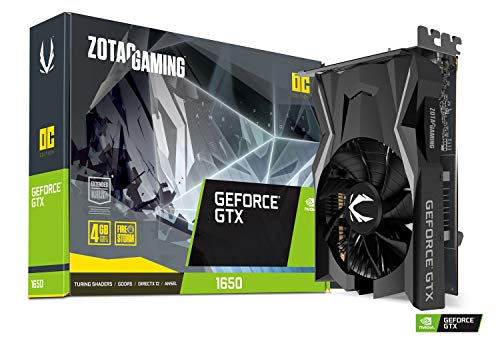 | ZOTAC Gaming GeForce GTX 1650 OC | Best Budget GTX 1650 | Check Price |
| 4 | 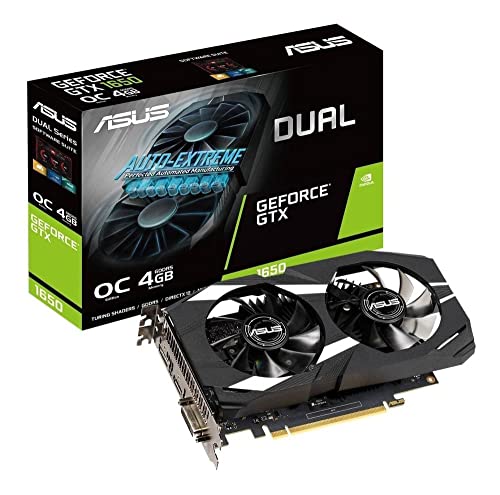 | ASUS Dual GeForce GTX 1650 OC | Best Value GTX 1650 | Check Price |
| 5 | 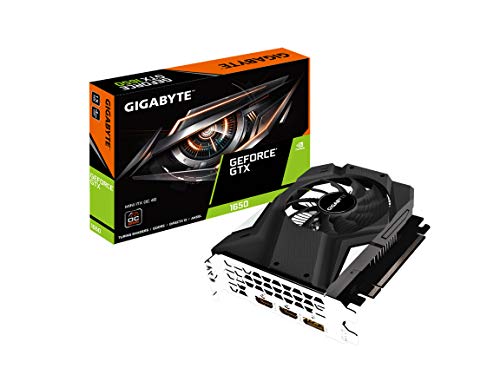 | GIGABYTE GeForce GTX 1650 Mini ITX OC | Best Compact GTX 1650 | Check Price |
| # | 1 |
| Preview |  |
| Product Name | MSI Gaming X GeForce GTX 1650 |
| Award | Best Overall GTX 1650 |
| Details | Check Price |
| # | 2 |
| Preview |  |
| Product Name | EVGA GeForce GTX 1650 XC Ultra Black Gaming |
| Award | Best Cooled GTX 1650 |
| Details | Check Price |
| # | 3 |
| Preview |  |
| Product Name | ZOTAC Gaming GeForce GTX 1650 OC |
| Award | Best Budget GTX 1650 |
| Details | Check Price |
| # | 4 |
| Preview |  |
| Product Name | ASUS Dual GeForce GTX 1650 OC |
| Award | Best Value GTX 1650 |
| Details | Check Price |
| # | 5 |
| Preview |  |
| Product Name | GIGABYTE GeForce GTX 1650 Mini ITX OC |
| Award | Best Compact GTX 1650 |
| Details | Check Price |
Last Update on 2026-01-06 at 16:30 / Affiliate links / Images from Amazon Product Advertising API
The GTX 1650 is the cheapest graphics card from Nvidia’s Turing lineup. At an MSRP of $149, it’s a go-to choice for budget gamers or those who just joined the PC Master Race. There are some suitable alternatives such as the GTX 1650 Super and the AMD RX 580. The 1050 Ti is also an older option with a lower price tag and similar performance to the GTX 1650.
1. MSI Gaming X GeForce GTX 1650
Best Overall GTX 1650
Pros
- High Core Clocks
- Attractive Aesthetics
- Solid Cooling Solution
- Great Acoustics
- Sizeable Power Budget
Cons
- Expensive Variant
- Lacks Shroud RGB Lights
Boost Core Clock: 1860 MHz | GPU Cores: 896 | Memory: 4GB GDDR5 | Memory Speed: 2000 MHz | Memory Bandwidth: 128 GB/s | Length: 9.8 Inches | No. of Fans: 2 | RGB Lighting: Yes | Graphics Outputs: 1 x HDMI, 2 x DisplayPort | Power Connectors: 1 x 6-pin | Maximum Nominal Power Consumption: 75W
MSI is one of the top-end vendors of the graphics card and their latest releases are really astonishing. MSI Gaming X GeForce GTX 1650 is one of the most beautiful-looking variants of the GTX 1650, with a similar design to the high-end RTX models like RTX 2070, although this model does not provide the RGB lighting on the front like those graphics cards.
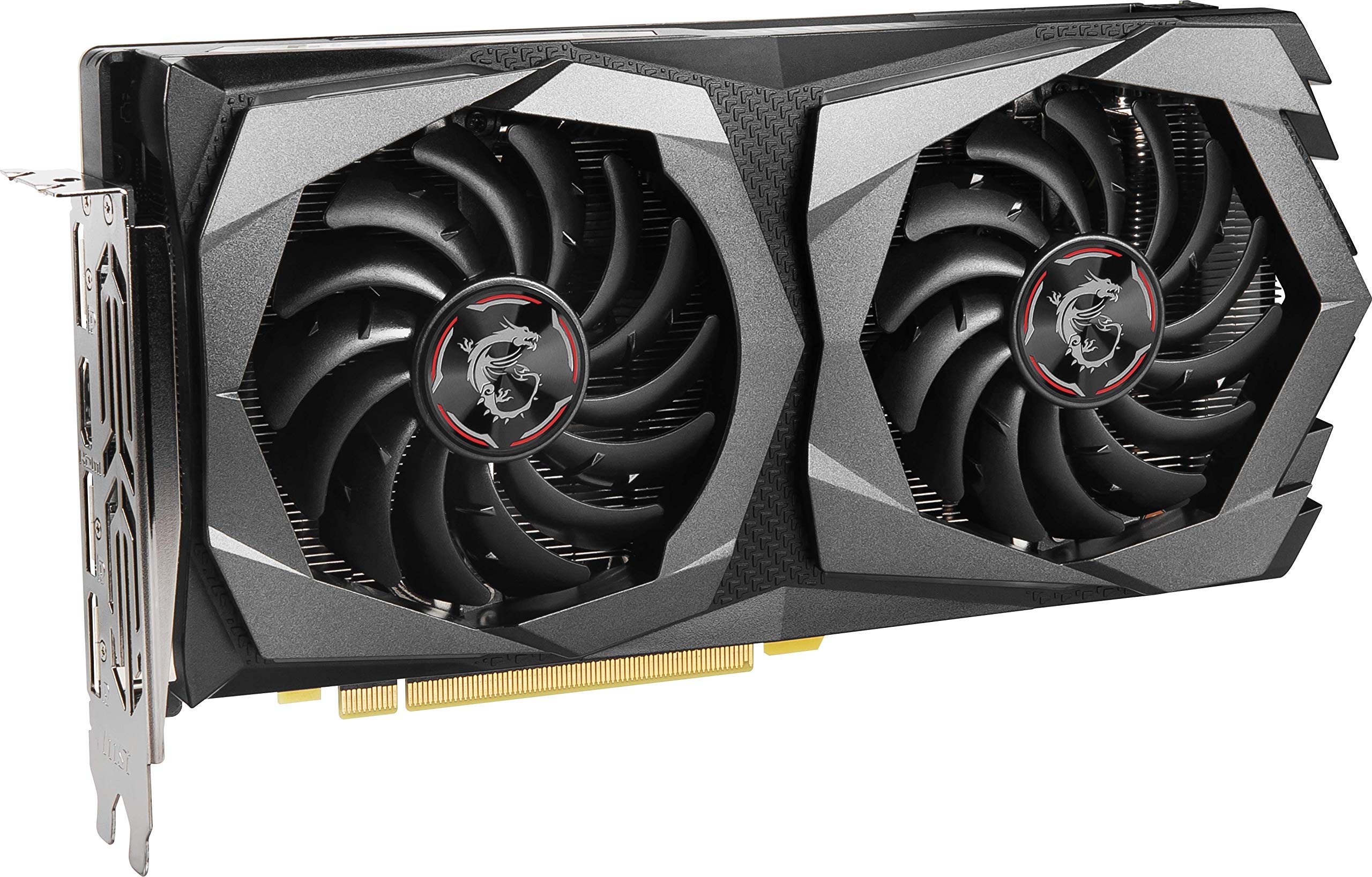
The graphics card offers a pleasant black and silver-color fan shroud along with the latest MSI TORX 3.0 fans. These fans do wonders in terms of acoustic levels and no doubt these are some of the best fans among all the variants of the GTX 1650.
The boost core clock of the graphics card is raised to 12% from the reference edition, which provides a sweet boost to the performance. The GPU overclocking went unexpectedly great and we saw core clocks as high as 2050 MHz while the memory overclocking was also quite an improvement with effective clock rates of 9300MHz. The temperature levels of the graphics card were close to the 65C mark, which is perfect in terms of cooling performance.
This graphics card is one of the best overall GTX 1650 graphics cards and provides great temperatures along with almost inaudible acoustic levels, however, it is priced higher than most of the other variants and one can buy a GTX 1660 by adding a dozen of bucks to the budget.
2. EVGA GeForce GTX 1650 XC Ultra Black Gaming
Best Cooled GTX 1650
Pros
- Quiet Operation
- Hefty Tri-slot Cooler
- Excellent Overclocking Headroom
- Good Power Budget
- Metal Backplate
Cons
- Size Compatbility Issues
- No RGB Lighting
Boost Core Clock: 1665 MHz | GPU Cores: 896 | Memory: 4GB GDDR5 | Memory Speed: 2000 MHz | Memory Bandwidth: 128 GB/s | Length: 7.96 Inches | No. of Fans: 2 | RGB Lighting: No | Graphics Outputs: 1 x HDMI, 2 x DisplayPort | Power Connectors: 1 x 6-pin | Maximum Nominal Power Consumption: 75W
EVGA GeForce GTX 1650 XC Ultra Black Gaming is one of two flagship variants of the GTX 1650 by EVGA. The graphics card hosts two EVGA fans nearby and these fans are a big improvement from the fans used in 10-series EVGA graphics cards. The fan shroud of the graphics card is very minimal and provides holes for improved cooling.
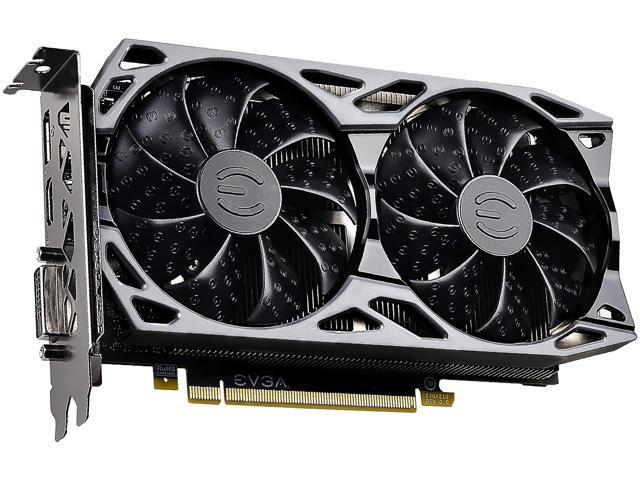
The graphics card features a tri-slot cooling solution, which we believe is a bit overkill for a 75-watt graphics card and EVGA has gone straight from the slim-profile graphics cards to extremely fat ones. The graphics card provides a well-crafted all-metal back-plate that protects it from the rear end.
The black editions of the EVGA lineup are not factory overclocked, which is why this graphics card features a 1665 MHz boost core clock. This is great for people who prefer a long life instead of a few additional frames per second. The safe overclocking of the graphics card went very successfully, with clock rates roaming in between 2000 MHz and 2050 MHz. The temperature levels of the graphics card were quite close to the MSI Gaming X variant, although this could have been better if EVGA would have used an aluminum-fin-based heat-sink.
Overall, the graphics capabilities of this graphics card are quite similar to the Gaming X model and we recommend this graphics card over the MSI Gaming X only if you prefer a lower price over better looks. Otherwise, it’s the best cooled GTX 1650.
3. ZOTAC Gaming GeForce GTX 1650 OC
Best Budget GTX 1650
Pros
- Priced At MSRP
- Supports DVI Output
- No Auxiliary Power Required
- Acceptable Aesthetics
Cons
- Mediocre Cooling
- Only One Fan
- Unremarkable Acoustics
Boost Core Clock: 1695 MHz | GPU Cores: 896 | Memory: 4GB GDDR5 | Memory Speed: 2000 MHz | Memory Bandwidth: 128 GB/s | Length: 5.94 Inches | No. of Fans: 1 | RGB Lighting: No | Graphics Outputs: 1 x DVI, 1 x HDMI, 1 x DisplayPort | Power Connectors: N/A | Maximum Nominal Power Consumption: 75W
ZOTAC Gaming GeForce GTX 1650 OC is one of those graphics cards that Zotac has released for gamers with small cases. The graphics card can be installed in most cases and the fan shroud of the graphics card is only slightly ahead of the PCIe slot connection.
It offers a single fan for cooling along with a small heat-sink, which is called sunflower heatsink by Zotac. A great perk of this graphics card is that it provides a Dual-Link DVI-port, which is a piece of good news for people who own a screen that does not offer an HDMI or DP-port.
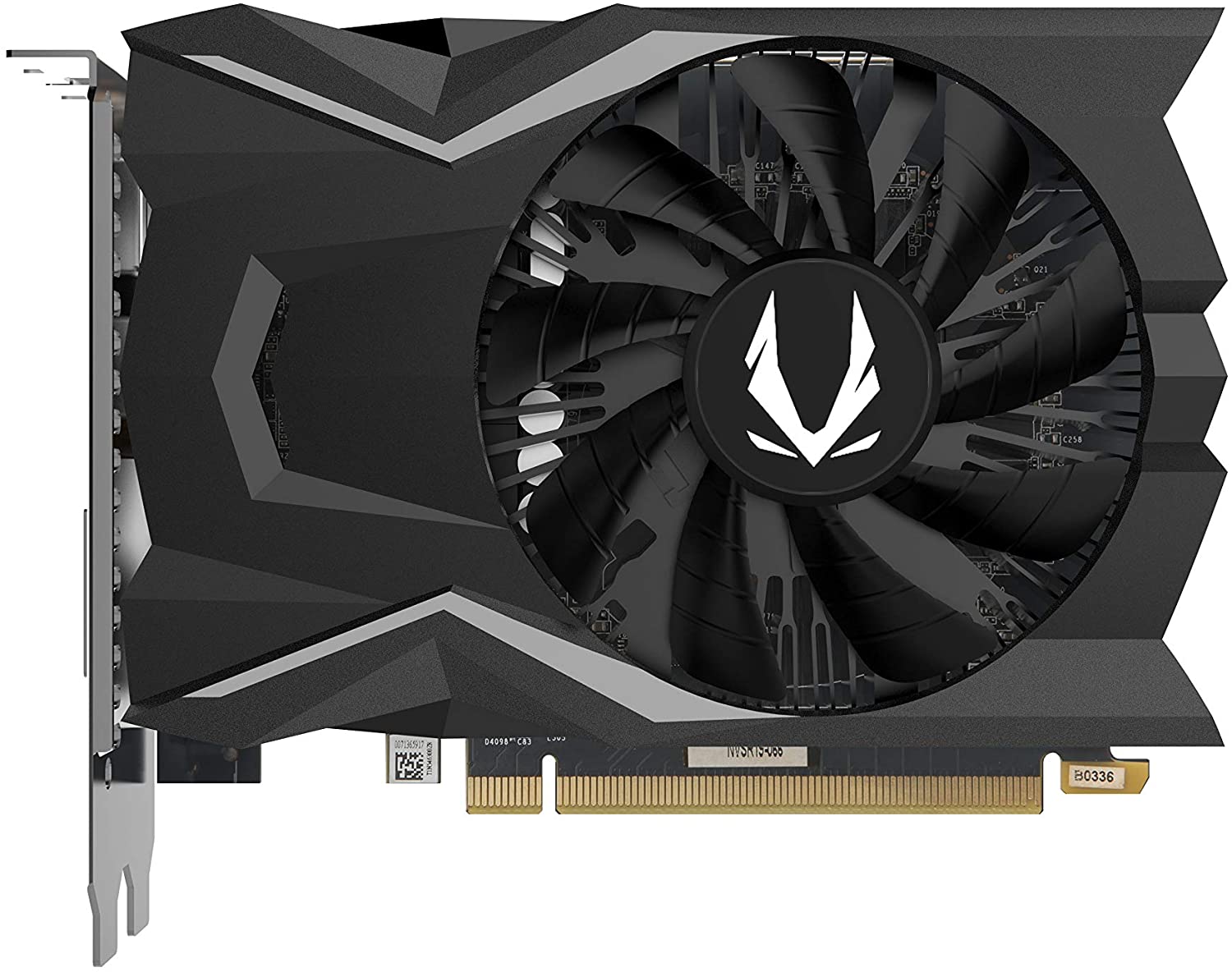
The core clocks of this graphics card are somewhat better than those of the reference edition graphics card, although it cannot be pushed very further due to the 75-watt power limit of the board. Due to this limitation, the temperature levels of the graphics card are also very cool at around 60-degrees. The overclocking yields around 100-125 MHz gain but the real-time performance difference is very low because of the graphics card power limitation.
We recommend this graphics card if you own a small case, where there is not enough space for a bulky graphics card. Moreover, this is the best budget GTX 1650 graphics card to consider if you are short on budget and want the cheapest of the variants of GTX 1650 or own a monitor offering only a DVI port.
4. ASUS Dual GeForce GTX 1650 OC
Best Value GTX 1650
Pros
- Good Cooling Solution
- Acceptable Design
- Improved Core Clocks
- DVI Output Supported
Cons
- Relatively Pricy
- Cheap Build Quality
- Loud Fans
Boost Core Clock: 1725 MHz | GPU Cores: 896 | Memory: 4GB GDDR5 | Memory Speed: 2000 MHz | Memory Bandwidth: 128 GB/s | Length: 8.04 Inches | No. of Fans: 2 | RGB Lighting: No | Graphics Outputs: 1 x DVI, 1 x HDMI, 2 x DisplayPort | Power Connectors: N/A | Maximum Nominal Power Consumption: 75W
ASUS is one of the most famous brands among the graphics cards, however, the Asus Dual GTX 1650 is not much of an extreme level graphics card. The graphics card features a plain design, with the front shroud not totally covering the PCB which aids in the airflow. There are two white stripes on the fan shroud, which is the signature of the Asus Dual-Fan models. There are two dust-resistant fans used in this graphics card which are also very quiet in operation.
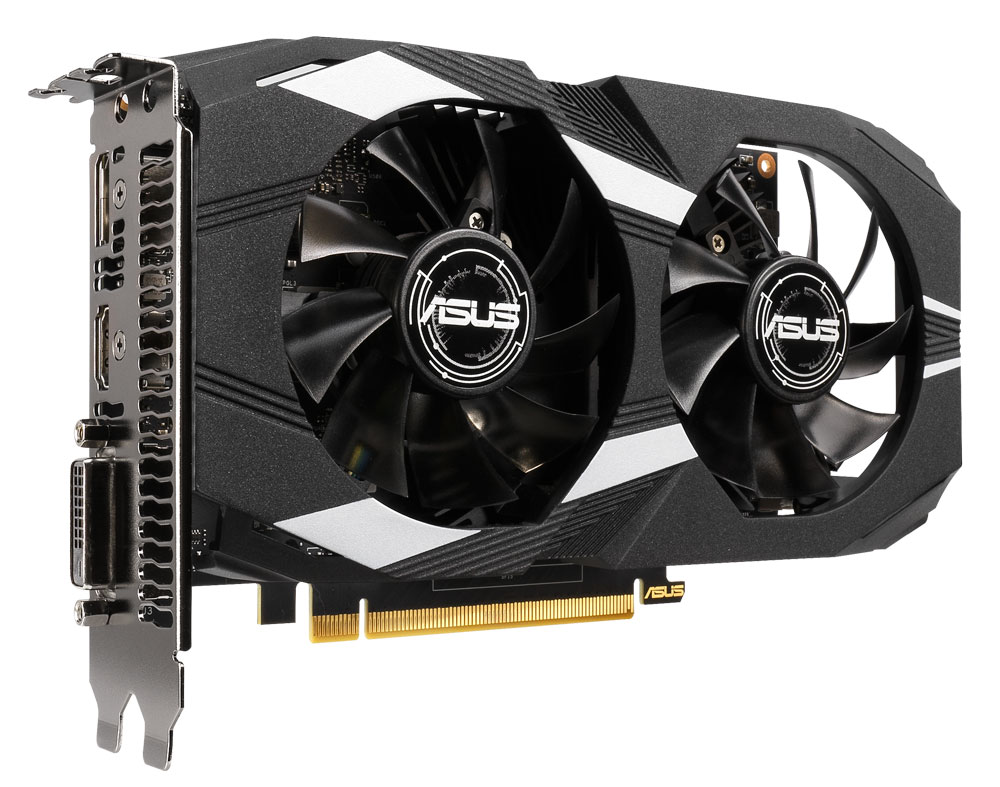
This graphics card, too, uses a sunflower-like heat-sink, which does not contain any heat pipe. The temperature levels of the graphics card are really low, as the graphics card does not provide any additional power connector and has a 75-watt board limit.
We believe that this variant of the GTX 1650 is not the best of the variants but provides a balanced perspective between looks, performance, and cooling solution. Ultimately, the best value GTX 1650 option for mediocre people.
5. GIGABYTE GeForce GTX 1650 Mini ITX OC
Best Compact GTX 1650
Pros
- Compact GTX 1650 Design
- Excellent Compatibility
- Looks Acceptable
Cons
- Lack Of Backplate
- Loud Operation
- Mediocre Thermals
- Not For Overclocking
Boost Core Clock: 1860 MHz | GPU Cores: 896 | Memory: 4GB GDDR5 | Memory Speed: 2000 MHz | Memory Bandwidth: 128 GB/s | Length: 5.98 Inches | No. of Fans: 1 | RGB Lighting: No | Graphics Outputs: 1 x HDMI, 2 x DisplayPort | Power Connectors: N/A | Maximum Nominal Power Consumption: 75W
GIGABYTE GeForce GTX 1650 Mini ITX OC is a graphics card by Gigabyte which is targeted towards people who own mini-ITX cases. There is a fair improvement in the design of the graphics card from the previous generation ITX variants, which used an orange-color theme. The fan of this graphics card is unique and offers improved airflow over the standard fans.
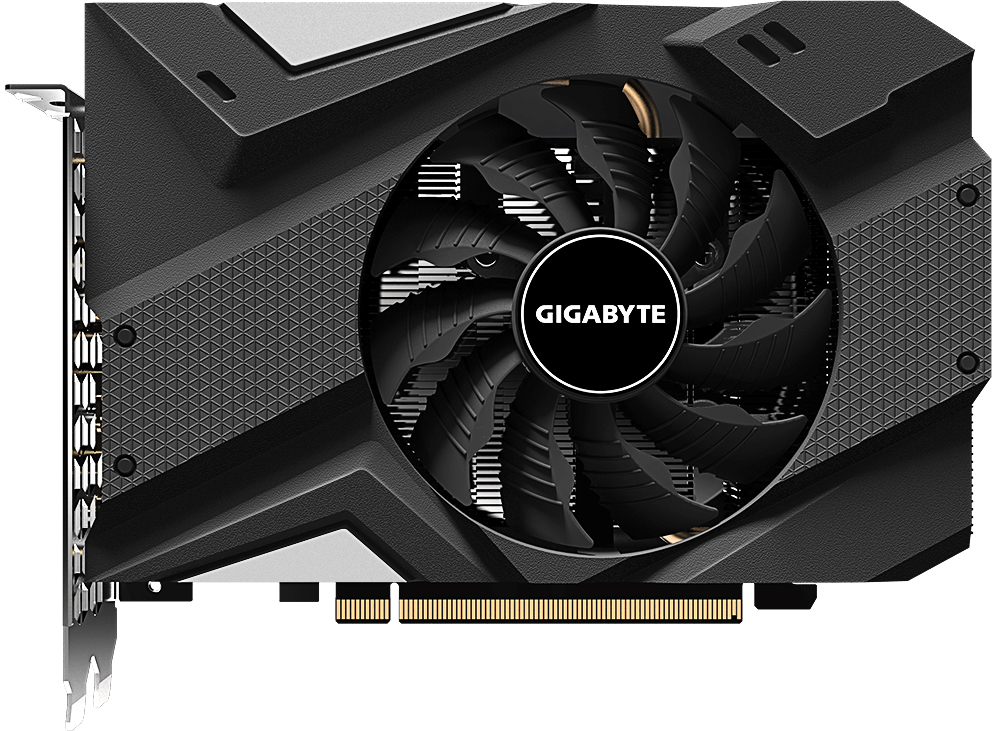
The fan shroud of the graphics card provides a black-color theme along with some white portion, which provides a good look overall. With the Aorus Utility, the parameters of the graphics card can be easily controlled and the GUI of the software feels very nice too.
The GPU cooler of the graphics card is somewhat better than that of the Zotac variant, as it is a bit thicker and denser. This enables the graphics card to operate at temperatures within the 60-degree mark most of the time, although do not expect any performance boost over the stock settings of the graphics card, as it barely holds the factory overclocked core clocks due to power limit. The fan of the graphics card is a bit noisier than other variants, as a single fan has to do more work to get similar temperature levels.
We believe that this variant of GTX 1650 is a great alternative to the Zotac Gaming edition, with a similar price tag and cooling performance, and provides better looks with compromise on the DVI port. It’s also the best compact GTX 1650 for compact builds.
How Much VRAM Do You Need In 2023?
While the GTX 1650 seems to be an excellent GPU option on a budget, there is one glaring issue with this offering from Nvidia. The GTX 1650 only packs 4GB of VRAM, which does not seem on par with modern gaming standards, at least at first glance. So, should you be concerned about the 4GB VRAM limit of the GTX 1650 if you plan to buy this budget-oriented GPU? How much VRAM do you actually need in 2023? We might have some answers.
This is an age-old question that has been repeated with every new graphics card release and is probably going to be repeated again in the future as well. Nevertheless, the answer remains the same; it depends. VRAM usage varies wildly across different games that are built on different engines using various different developmental techniques. One cannot simply assign a VRAM value to a game or a set of games and be done with it. There are a lot of factors that affect VRAM usage in real life.
The biggest factor that affects VRAM usage is your resolution. The three major resolutions of today are 1080p, 1440p, and 4K. VRAM resolution increases quite exponentially when we increase resolution from 1440p to 4K, while the jump from 1080p to 1440p is also quite significant. 4K is the resolution that demands the most VRAM as of today, but talks of 8K gaming are also looming on the horizon.
The other factor that affects VRAM usage significantly is the type of games that you are playing on your graphics card. If you are more interested in real-time strategy games, then your VRAM usage is going to be significantly lower than another player who is more interested in open-world games. Similarly, a slightly older AAA title like Assassin’s Creed IV: Black Flag is going to consume a lot less VRAM than the latest entry to the series: Assassin’s Creed Valhalla. There is no rule of thumb to VRAM usage, but if we look at the broad spectrum of games across multiple genres, open-world AAA games are the ones that consume the highest amount of VRAM.
Therefore, keeping these points in mind, we can assume that 4GB of VRAM is not going to be enough for mainstream high-budget AAA games moving forward. Even the best GTX 1650 variants might be feeling the crunch of time sooner than expected due to their handicapped memory configuration. This is one reason why you might want to avoid the GTX 1650 graphics cards.
FAQs
The GTX 1650 was an entry-level graphics card option from Nvidia’s Turing lineup when it was launched, and it has not exactly aged gracefully ever since. Games have gotten more demanding over the past couple of years, and the GTX 1650 lags behind the competition from AMD in this department. Unless you get the GTX 1650 on a really good deal, we would recommend skipping this card in favor of competitive AMD options like the excellent AMD RX 580 budget GPU.
Valorant is a lightweight game that does not demand a lot of graphical performance, so the GTX 1650 should be good for that game. Any other competitive multiplayer game with a similar performance metric should also be able to run pretty easily on the GTX 1650. Games like CS: GO, Fortnite, and Rocket League are a great match for a graphics card of this caliber. Other single-player AAA titles will struggle a bit.
Unfortunately, the GTX 1650 is not really a great choice for 4K gaming. 4K gaming has become really demanding over the last few years, and it is not really something that the GTX 1650 was ever marketed at. The best resolution for the GTX 1650 is 1080p, and it can run most modern games in that resolution at reasonable frame rates, provided you are willing to be a little flexible with your graphics settings.
While it may not be the perfect solution for primary streaming at high bitrates and high quality, the GTX 1650 can be classified as serviceable in the streaming department. It does offer Nvidia’s new Turing NVENC encoder that is excellent at streaming, but the resources of the GPU itself somewhat limit the streaming capability of the card. We would rate the streaming ability of the card as a 6/10 on average.
 Check Price
Check Price